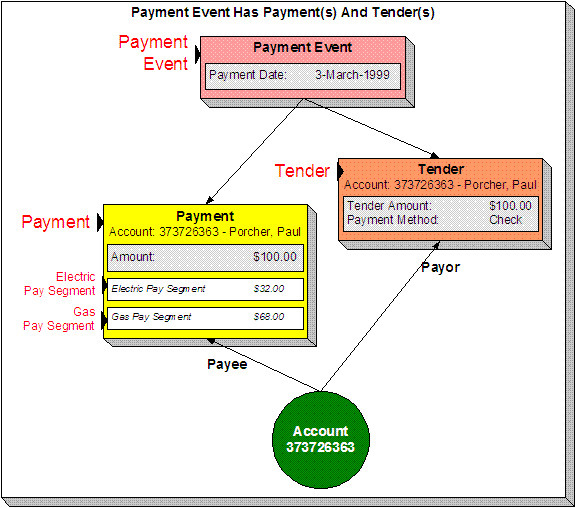A Payment Event Has Payments And Tenders
The explanation in The Financial Big Picture provides an accurate, but incomplete view of payments. The missing pieces concern payment events and tenders. The following diagram illustrates the difference between a payment event, its payment(s) and its tender(s).

The following concepts are illustrated above:
A payment event defines the event A payment event is required whenever any form of payment is received. The payment event defines the payment date (and that's all).
A payment event has tender(s) A tender exists for every form of tender remitted as part of the payment event. A payment event must have at least one tender otherwise nothing was remitted. A payment event may have many tenders when multiple payment methods are associated with an event (e.g., paying with cash, a check, and a credit card).
A payment is allocated to account(s) The total amount of tenders under a payment event is distributed to one or more accounts.
A payment is distributed to SAs The system allocates an account's payment amount amongst its service agreements. The system creates a payment segment for each service agreement that receives a portion of the payment.
Payor and payee are frequently the same The account remitting the tender (the payor) is frequently the same as the account to which the funds are allocated (the payee). The next illustration provides an example when this is not the case.
